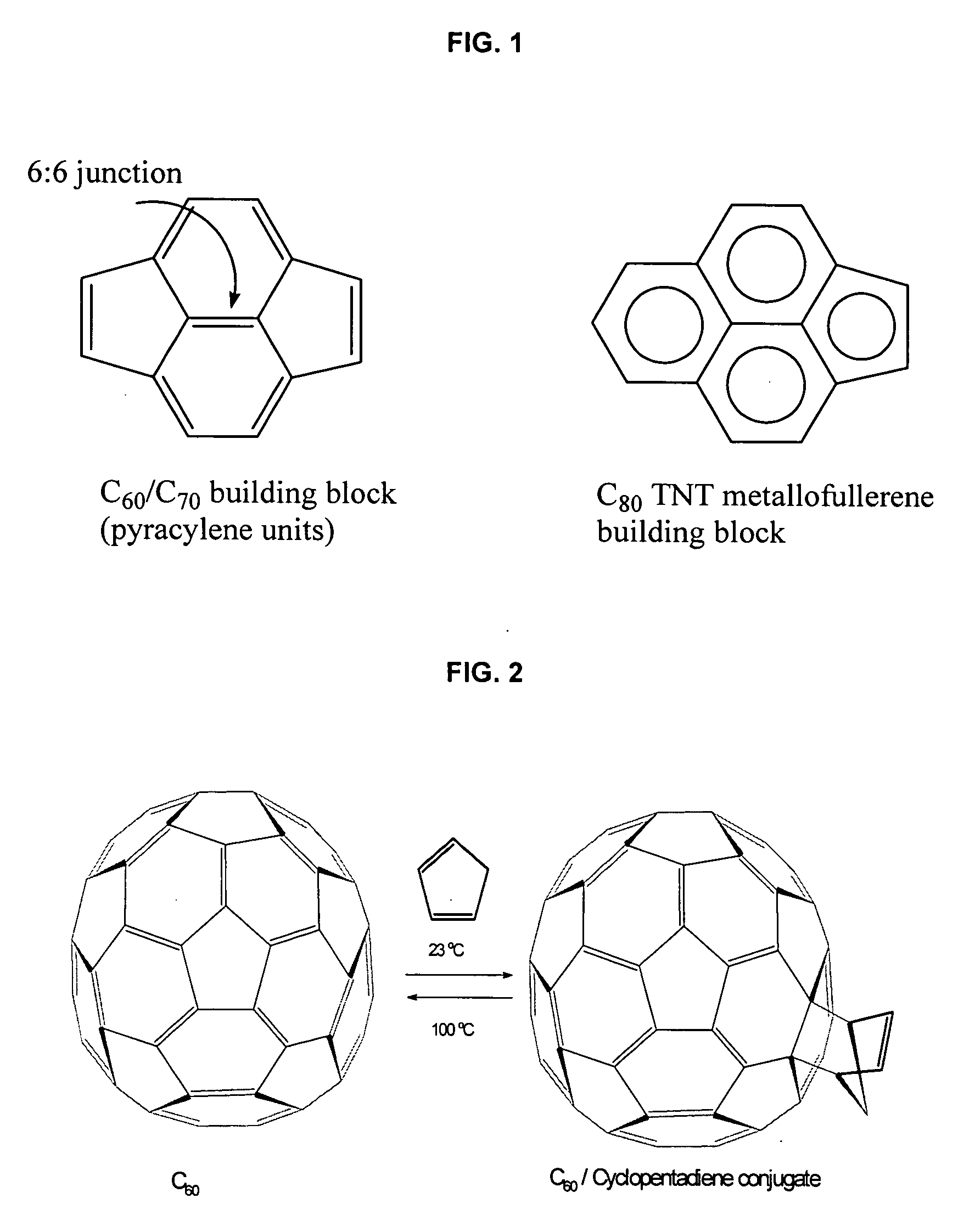Chemical separation method for fullerenes
a fullerene and chemical separation technology, applied in the field of purifying fullerenes, can solve the problems of large volume of aromatic organic solvents, large labor costs, and large volume of fullerene-binding columns
- Summary
- Abstract
- Description
- Claims
- Application Information
AI Technical Summary
Benefits of technology
Problems solved by technology
Method used
Image
Examples
Embodiment Construction
[0039]It has been discovered that differences in electronic structure of fullerenes of various types permit separation and purification of different types of fullerenes based on chemical reactivity.
[0040]For example, C60 and C70, other fullerenes and various classical metallofullerenes contain a type of 6:6 ring junctions where two six-member rings are joined by two five-member rings. These 6:6 ring junctions form a pyracylene region or Stone-Wales patch, as shown in FIG. 1. (Stone, A. J. and Wales, D. J., Chem. Phys. Lett., 128: 501, 1986). At these 6:6 junctions, the bond shared by the two hexagons (˜1.38 Å) is shorter than the bond at the 6:5 junctions between a hexagon and a pentagon (˜1.45 Å). Consequently, in the lowest energy structure, the fullerene's C═C double bonds are positioned at the 6:6 junction and single bonds are positioned at the 6:5 junction.
[0041]The reactivity of C60 is similar to a localized, electron-deficient polyolefin, because of its isolated double bonds....
PUM
| Property | Measurement | Unit |
|---|---|---|
| LUMO | aaaaa | aaaaa |
| LUMO | aaaaa | aaaaa |
| solubility | aaaaa | aaaaa |
Abstract
Description
Claims
Application Information
 Login to View More
Login to View More - R&D
- Intellectual Property
- Life Sciences
- Materials
- Tech Scout
- Unparalleled Data Quality
- Higher Quality Content
- 60% Fewer Hallucinations
Browse by: Latest US Patents, China's latest patents, Technical Efficacy Thesaurus, Application Domain, Technology Topic, Popular Technical Reports.
© 2025 PatSnap. All rights reserved.Legal|Privacy policy|Modern Slavery Act Transparency Statement|Sitemap|About US| Contact US: help@patsnap.com



